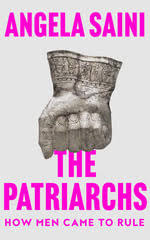When I was applying to become a GP partner in the late 1980s, general practice was a popular career choice for doctors in the UK. Competition was fierce. Each week I typed five or more letters to practices advertising in the British Medical Journal for new partners. After a few months and some interviews, it became apparent that, while many practices wanted a female doctor, they were reluctant to take one on full-time as an equal partner. Eventually I accepted a salaried part-time position at a well-regarded practice.
I soon recognised my mistake.
The practice was certainly providing excellent clinical care and training; however it was patriarchal and hierarchical in its governance. I was employed to work three days a week, and accepted an additional one day per week position at a local hospital. This did not go down well with the senior partner, who expected my three days to be flexible depending on the other partners’ outside commitments. In other words, I was paid for three days a week but had to be available for five.
Fortunately, I managed to move to another practice which respected women doctors as equal within the partnership.
This has not been my only experience of patriarchy, but I have been fortunate compared to millions of women globally.
Why is patriarchy important to consider in a blog on health professionals and education? According to the World Health Organization, women make up 67% of the global health and social care workforce. Despite this, they are mainly in lower status and lower paid jobs than their male colleagues due to gender biases and cultural expectations.*
These problems are not restricted to health and social care. We are seeing increasing restrictions placed on women’s rights including access to education, limitation of choices with regards to reproductive health, and freedom of movement.
Angela Saini, a science journalist, in her book The Patriarchs: How men came to rule, asks the questions: What are the origins of patriarchy? How did men come to have all this power? Is patriarchy inevitable? She does not feel that it is solely related to physical strength. There are examples of historical and contemporary societies that are matrilinear (passing wealth and power through the female line) and matriarchal. Colonisation was a major factor in the demotion of women in many countries, while some religious beliefs that see the female role mainly as wife, mother and housemaker have restricted choices outside the home.
Recent armed conflicts, natural disasters and gender disparities are all contributing to the increasing number of girls worldwide who have been withdrawn from education. Saini discusses the complexities of different ideologies that have impacted on women’s education and employment. For example, a country may increase its female workforce but still expect women to do all the childcare and housework without much support.
I feel that while some things are changing for the better, in other aspects we are going backwards. However, Saini finishes on an optimistic note: humans are social creatures who do care for each other. She calls for us to ‘rediscover our capacity to be socially bold’ and not accept male supremacy as a given but as a custom susceptible to change.
The Patriarchs by Angela Saini, 2023; 4th Estate, 2023
For consideration of the role of women in the health workforce see:
*Ayaz, B., Martimianakis, M.A., Muntaner, C. et al. Participation of women in the health workforce in the fragile and conflict-affected countries: a scoping review. Hum Resour Health 19, 94 (2021). https://doi.org/10.1186/s12960-021-00635-7
